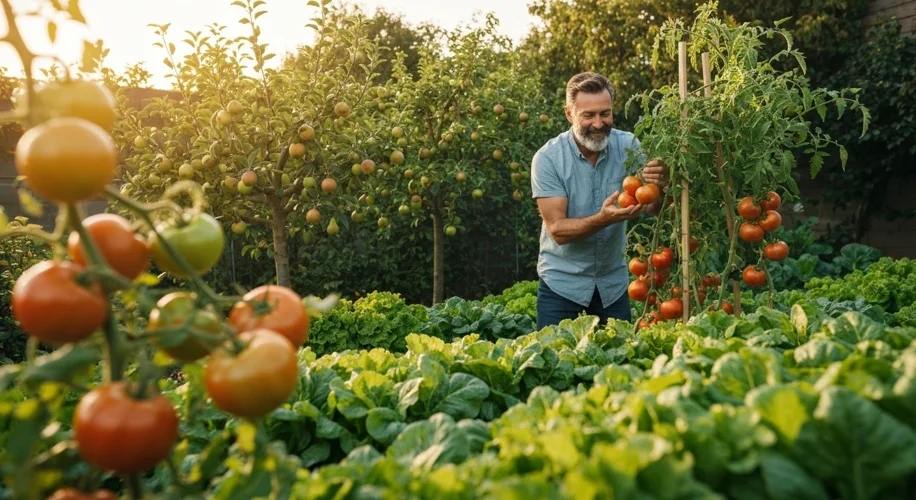There’s a special kind of satisfaction that comes from stepping out your back door and picking fresh vegetables and fruit that you’ve grown yourself. It might seem like a big undertaking, but transforming a typical suburban backyard into a productive food-producing space is more achievable than you might think.
I’ve spent years turning my own backyard here in the Midwest into a thriving garden and orchard, and I’m excited to share what I’ve learned. It’s not about having a huge property; it’s about smart planning and understanding the basics.
Getting Started: The Foundation of Your Garden
Everything starts with the soil. Healthy soil means healthy plants. Before you even think about seeds, take some time to assess your soil. Is it heavy clay, sandy, or something in between? You can do a simple test by grabbing a handful of moist soil and squeezing it. If it crumbles easily, it’s likely in good shape. If it stays in a tight ball or feels gritty, it needs some work.
My go-to for improving soil is compost. It adds vital nutrients and improves drainage and aeration. I start with a generous layer of compost and work it into the top few inches of soil. This is the bedrock of good gardening.
Choosing Your Edibles: What Works Best?
Selecting the right plants is key to success, especially if you’re new to this. Consider your climate and how much sunlight your yard gets. My corner of the Midwest has distinct seasons, so I focus on varieties that can handle our hot summers and cold winters.
For vegetables, I love planting things with a good yield in a small space. Tomatoes, peppers, bush beans, and leafy greens like lettuce and spinach are great choices. They’re relatively easy to grow and provide a steady supply of fresh produce.
For an orchard, starting with dwarf fruit trees is a fantastic option for a suburban backyard. Apple, pear, and cherry trees can be managed to stay a manageable size. I also have a few plum trees and a peach tree that have been incredibly rewarding.
Keeping Pests at Bay, Naturally
Pest control is a common concern, but you don’t need harsh chemicals. My strategy is to create a balanced ecosystem in my garden. This means encouraging beneficial insects like ladybugs and lacewings, which prey on common garden pests like aphids.
Companion planting is another trick up my sleeve. Planting certain herbs and flowers alongside vegetables can deter pests. For example, marigolds are known to deter nematodes, and basil planted near tomatoes is said to improve their flavor and ward off tomato hornworms.
Regularly inspecting your plants is also crucial. The sooner you spot a problem, the easier it is to manage. Often, pests can be simply washed off with a strong spray of water or by hand-picking them.
The Orchard Experience
Fruit trees require a bit more patience, but the rewards are immense. Proper pruning is essential for tree health and fruit production. It encourages air circulation, which helps prevent diseases, and directs the tree’s energy into producing good fruit.
I also pay attention to watering, especially during dry spells, and ensure my trees have good drainage. Over time, you’ll learn the rhythms of your trees and what they need to thrive.
From Garden to Table
There’s nothing quite like cooking with ingredients picked moments before. The freshness and flavor are unparalleled. Whether it’s a simple salad with homegrown greens and tomatoes or a pie made with your own apples, the connection to your food is deeply satisfying.
Starting a vegetable garden and small orchard is a journey. There will be successes and learning opportunities. But with a focus on soil health, smart plant choices, and natural pest management, you can transform your backyard into a beautiful, productive space that nourishes you and your family.

